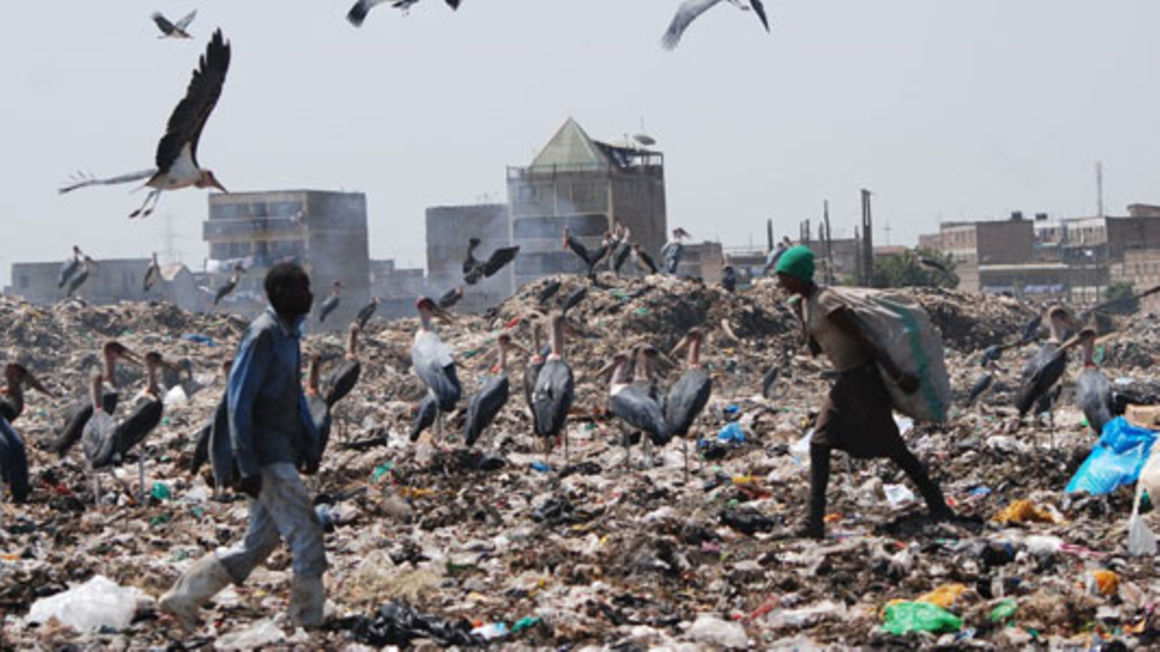
Waste dumped at Dandora. The rich in Kenya can invest in sanitation projects to help the poor. File
Summary
- KenGen, Kenya’s leading power producer and the Nairobi Metropolitan Services (NMS) recently reached a deal to put up the country’s first waste-to-energy utility scale power plant in the city.
- The project is expected to convert 2,500 tonnes of waste to electricity daily at the city’s dumpsite, Dandora.
- Embracing this waste recycling innovation is definitely a strategic move by KenGen, given that there are just 1,700 thermal waste-to-energy (WtE) plants worldwide, with over 80 percent of them located in developed countries. Currently only four are in Africa.
- The project stands to benefit not only KenGen’s shareholders, but also the community surrounding the overflowing landfill, which has over the years been an environmental menace.
Kenen, Kenya’s leading power producer and the Nairobi Metropolitan Services (NMS) recently reached a deal to put up the country’s first waste-to-energy utility scale power plant in the city.
The project is expected to convert 2,500 tonnes of waste to electricity daily at the city’s dumpsite, Dandora.
Embracing this waste recycling innovation is definitely a strategic move by KenGen, given that there are just 1,700 thermal waste-to-energy (WtE) plants worldwide, with over 80 percent of them located in developed countries. Currently only four are in Africa.
The project stands to benefit not only KenGen’s shareholders, but also the community surrounding the overflowing landfill, which has over the years been an environmental menace.
The Dandora dumpsite is more than three times full, holding over 1.8 million tonnes of solid waste against a capacity of 500,000 tonnes. In excess of 2,500 tonnes of garbage continues to find its way to the site daily.
Through the investment, the power producer is moving to create both economic value by diversifying its power generation basket and shared value for the society as part of the firm’s sustainability agenda.
Businesses are a potentially powerful force for positive change. Meeting society’s pressing challenges and needs should, therefore, be at the heart of their purpose and operations.
To this end, more enterprises must strive to adopt sustainability and be on the lookout for low-hanging fruits for growth and longevity. Tapping into the circular economy as KenGen has, for instance, presents an ocean of opportunities for sustainable enterprises.
The circular economy is an industrial model that is restorative or regenerative by design and intent: products, components, and materials are kept at their highest value at all times.Pursuing sustainability strategies calls for strategic perspectives, though. And this is only possible when the management is fully on board on this journey and empowered.
For the KenGen-NMS project, there are multiple other low-hanging fruits beyond power generation. For example, the plant can provide other benefits and revenue streams such as gate fees (the fee per tonne paid by the municipality to the facility for receiving the waste), co-generated heat, and carbon credits.
The proposed waste to energy facility is expected to be a one-stop social and economic transformation hub, getting rid of waste safely and producing power for the country, while also spinning off jobs and research and development opportunities.
The project will not be without anticipated challenges, however especially when it comes to running the power plant. For instance, more than half (57 percent) of the municipal solid waste is biodegradable organic materials which is low in calorific value.
This would mean less kilowatt hours of electricity (kWh) generated for a tonne of waste.
Balancing the right calorific value and quality of the waste to optimise output would therefore be a key factor to consider.
Next, there is no systematic waste collection in Africa, Kenya included. On this front, KenGen is considering employing street children to help in sorting the waste. While this could work in the short-term as a stop-gap measure, there is need for a more sustainable strategy.
Among other strategies, the power producer may want to join forces with different players to ensure adoption of proper mechanism of waste collection and separation at source.
Also to be considered should be safety regulations. This would inform the design of the plant, as well as its thermal capacity based on the level of the combustible waste available.
Financing is going to be yet another important factor in the KenGen-NMS power facility as the traditional plain vanilla financing simply won’t hack it. This calls for an innovative approach.
I’m actually looking forward to seeing how this will be structured, and whether it will be blended finance, split between debt and equity or public private partnership given that KenGen is majority owned by the government.
From the above points, it is clear that companies cannot just blindly implement perceived sustainability solutions that may end up being white elephant projects in the absence of proper planning and studies.
When it comes to circular economy, companies have various options that they may consider in regard to the new business models for building forward better. This includes circular supply-chains where scarce resources are replaced with fully renewable, recyclable, or biodegradable resource inputs.
Other options for companies to consider to be able to leverage on the circular economy will include recovery and recycling; product life-extension; sharing platform models and product as a service.




No comments :
Post a Comment